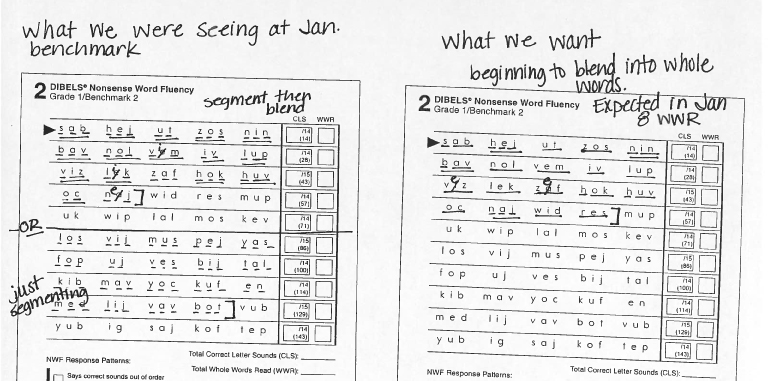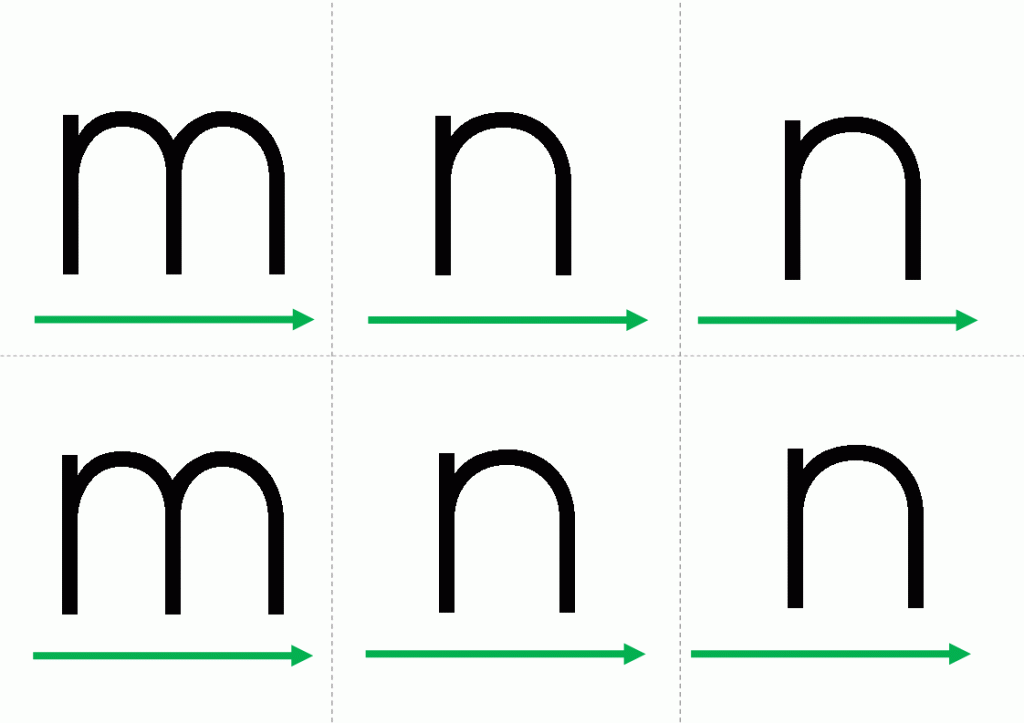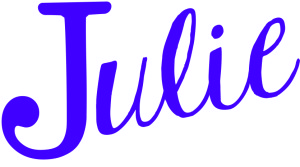Our seven school districts changed from using the DIBELS 6th Edition to the DIBELS Next this school year. Following each benchmark assessment we were just a little bit nervous (actually, really nervous) as to what our data would look like. Would any changes we see be a result of the change in the assessment or as a result of a change in instruction? When comparing our data using the DIBELS Next to our past assessment trends, one of the most striking differences came at the winter benchmark assessment for first grade. Although we maintained the percentage of students performing at benchmark, we now had many more falling within the intensive range. Yikes! After analyzing all the data, our school teams felt that the new requirement for students to begin blending nonsense words rather than sounding them out sound-by-sound was a likely explanation.
Taking a dip in our data, admittedly, was a hard pill to swallow. When we took a step back and thought about it, we really liked this change in the assessment. We felt that the previous assessment did not always correctly identify high needs students at the winter benchmark. We had several first grade students who were very accurate and automatic with sound-symbol correspondence and could whiz through nonsense words sound-by-sound, but could absolutely not blend the sounds back. They would often fall within the strategic range on the assessment (fortunately we had other data to support a need for intervention). So, our plan now is to address the automaticity for blending being more intentional and direct in the way we do it. We recently had a Make-It-Take-It session for our first grade teachers in our districts. During this session we reviewed ISD-wide, district-wide and school-wide first grade data as well their classroom data and planned for student grouping for interventions. To address this issue of the automaticity of blending, I made these blending cards and a video for them. I thought you, too, might find it helpful.
Click HERE to download free blending cards for this activitiy.
You can purchase blending boards commerically, but they are so expensive. The blending boards used in the video were made by our Career Tech Center. They are awesome!
The Race Car Blending activity is also a favorite activity to help with blending. The Short Vowel/CVC Activity Pack contains a total fo 13 activities, 8 of which specifically target blending of CVC words





Do you have directions to make the blending boards? If so, could you put them on your blog or send them to me by email? Thank you. Very helpful. We don’t do Dibels, but do TPRI. I am an instructional specialist and want to share this information with my teachers.
I will put them on the blog. It’ll be a little bit, though, as I’ll have to get the written directions from our CTC. Thanks.
did you post directions for blending boards?
Yes. Here is the link https://blog.maketaketeach.com/?p=1432 It is under my June blog posts too.
Hi Julie, Love the boards! I have noticed that a few of my low kiddos need an extra step in your 3 levels that you showed. It would be between step 2 and 3. I have kiddos that do not blend the first two sounds together and I get a choppy blended word. For example they would say /m/ /op/. So to help them with this I have had them blend the first TWO sounds together. For example I would show them the two cards “m” and “o” and have them blend it to get /mo/ and then show them the “p” card and it just pops right out “mop” It has worked wonders for those who can’t blend smoothly. Thoughts this would help others as well!!
Diane
kindergartenafunplacetobe.blogspot.com
Diane- Thanks for the tip. I’m going to try that this coming week!
I am not yet a teacher, still finishing school. But I have a question about the nonsense words. You said you have the kids do thumbs up if its a real word, but what happens when they come to these words kum & kus – when they sound those nonsense words out they will hear those words as real words: come & cuss. What do you tell the kids then?
That’s a good question. It doesn’t happen tons, but when it does I will usually explain that the word “come, like I will come to your house, is spelled differently- c-o-m-e” and just leave it as that. If you wish, you could precheck the cards you wish to use ahead of time to be sure that doesn’t happen, but the kids are usually fine with that simple explanation.
Thank you so much for the help with blending. I’ve taught Jr. High for 28 years and 4th grade the last 4, but have worked with TK and K little ones in an intervention the last 2 summers. This is a great help!